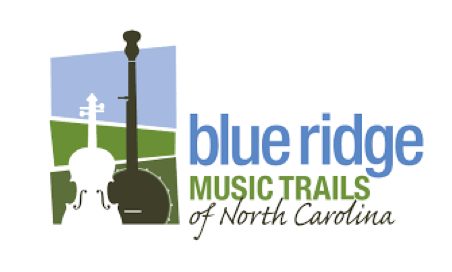Guitars in Bluegrass Music
Bluegrass is a living tradition found throughout the foothills and mountains of Western North Carolina and beyond. Incredible, inspiring bluegrass musicians are as likely to be found on porches as they are on stages and the music is always exciting, energetic, and powerful. Bluegrass has incorporated many instruments over the last century, but one of the most important parts of a bluegrass band is having the right bluegrass guitar player.
Bluegrass was born from what most people called “mountain music” or “old-time music” in which guitar was not a primary instrument. Fiddles and banjos generally took center stage. In the 1920s, the guitar appeared mostly as a backup instrument that was used to create a rhythm for the other instruments and singers. Lead guitar was very rare during this time, although bands like the Carter Family were incorporating more and more guitar into their recordings and live performances. The term “bluegrass” was not used commonly in America until the 1950s when Bill Monroe and the Blue Grass Boys started to become nationally known. In the early 1930s, Bill played mandolin while his brother Charlie played guitar, keeping strong rhythm and base lines behind Bill’s incredible instrumental solos. In the mid 1940s Bill started a new kind of sound featuring a young Earl Scruggs on banjo, Chubby Wise on fiddle, and Lester Flatt on guitar. This became the model for modern bluegrass bands.
In the 1950s, North Carolina native Doc Watson pioneered a style of flatpicking fiddle tunes and instrumentals on the guitar. After Doc was “discovered” and recorded in the 1960s, this style became the signature sound of bluegrass guitar. Oddly enough, Doc developed this style while playing an electric guitar, and later adapted it for the acoustic guitar. Also in the 1950s, another North Carolina native, George Shuffler, developed a distinctive style of cross-picking melodies on the guitar with a flatpick.
Traditional Bluegrass Instruments
Bluegrass music is played in a variety of styles that have developed in different areas of the United States during the last sixty or seventy years. You can hear everything from traditional to contemporary styles in the Blue Ridge Mountains and Smoky Mountains of North Carolina. Bluegrass guitar has had its place in every decade and every style over the years. It has become a signature lead and/or rhythm instrument for many musicians and today bluegrass guitar players are encouraged to develop their own personal style and compose new songs and instrumentals. In addition to the bluegrass guitar, the other instruments commonly found in bluegrass today are:
Some bands also bring in washboards, spoons, saws, and more. These types of instruments harken back to the old time music roots of bluegrass.
North Carolina Bluegrass Guitarists
Western North Carolina is home to many bluegrass guitar heroes. You may think of the banjo first when you think of famous Western North Carolina bluegrass musicians. Earl Scruggs, born and raised just outside of Shelby, North Carolina, is famous for developing the three finger banjo playing style known world-wide as Scruggs-style picking. But the tradition of bluegrass guitar in this area is very rich. Most famously, North Carolina native Doc Watson developed a flat picking style for the bluegrass guitar that helped turn future bluegrass guitar players into band leaders. Here are some of the other bluegrass guitar heroes who were born and raised in Western North Carolina.
Frank Buchanan – Asheville, NC
Frank Buchanan was born near Spruce Pine and started playing guitar and mandolin at the age of 14. Frank and his brother Ray became well known as the Buchanan Brothers. After his brother’s death he took some time off and at 25 years old, after joining a new band, Frank met Bill Monroe in Virginia and soon after he went to Nashville to become one of Bill’s Blue Grass Boys. Frank recorded 18 songs with Bill and wrote the “Maggie Valley Waltz,” a song still loved throughout Haywood County today.
Josh Goforth – Madison County, NC
Leonard Hollifield – Weaverville, NC
Leonard Hollifield began playing the bluegrass guitar at the age of 10 and more than 70 years later he is one of Western North Carolina’s most respected bluegrass guitarists. Hollifield played everything from radio shows to square dances to private parties all before he was 16. Hollifield currently plays the bluegrass guitar for the Stoney Creek Boys, the host band for the Mountain Dance and Folk Festival and Shindig on the Green. He has played with the Stoney Creek Boys for more than 30 years.
Larry Keith – Henderson County, NC
Nationally recognized bluegrass guitar player Larry Keith is originally from Henderson County and he learned to play bluegrass guitar starting at 9 or 10 years old. His original guitar teacher was his grandmother. Keith came from a family of musicians and was deeply influenced by the country and gospel music he was raised with as a child. This is what partially inspired him to play with Dolly Parton for four years. Keith has been the leader of the bluegrass band the “Lonesome Road Band” since 1995 and in 2007 his solo album “Travelin’ Angel” was nominated for three Grammy awards.
Alice Powers – Burnsville, NC
A native of Yancey County, Alice Powers also grew up surrounded by music. Alice’s father Arvle Wyatt and his band the Blue Ridge Mountaineers, were very influential in the development of bluegrass music in the region. Alice began singing in front of audiences at the age of six. She learned to play bluegrass guitar as a teenager and began to enjoy accompanying herself while singing. Singing is Alice’s first love and she uses the bluegrass guitar to set the mood and tell a story in song.
Seth Taylor – Bryson City, NC
To learn about other Western North Carolina bluegrass musicians visit the Blue Ridge National Heritage Area’s Traditional Artist Directory.
Hear Live Bluegrass or Play Along
If you love to listen to bluegrass guitar, travel along the Blue Ridge Music Trails of North Carolina. Check out our events calendar to find where to go for live bluegrass concerts. Nothing beats hearing bluegrass guitar live and in person and there are opportunities all throughout the year. If you love to play bluegrass guitar, then plan a trip and come to learn from some of the region’s best bluegrass musicians. Many festivals offer educational classes to improve your skills and many local jam sessions give you the chance to sit next to some of today’s most influential bluegrass musicians.





